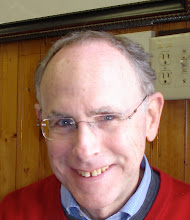
My sister-in-law is a professor at a medical school, and during a conversation she lamented that medical students were dressing like they were on television programs: men wearing scrubs instead of traditional lab coats; and women wearing more provocative clothing than they had in the past. She spoke to me about it, because she thought there might be a connection to popular culture. Indeed there does seem to be some modeling going on between characters on television and young doctors. So I wasn’t surprised when I read the abc12.com celebrity blog about this very phenomenon. The blog post confirmed what my sister-in-law and I had been speaking about: medical schools are concerned about where doctors in training learn about their profession. Some informal learning comes from Grey’s Anatomy, ER and other medically oriented programs. But it goes beyond those likely culprits as other programs, like Law and Order often feature medical situations. Oh, and the problem isn’t isolated to breaking dress codes, medical students also learn about intubation and CPR from medical programs. On the one hand it makes sense that medical students would enjoy medically oriented entertainment. And, modeling behavior is nothing new when it comes to popular culture, as much of the academic literature has focused on the transference of violent behavior from the screen to actual life situations. The kind of modeling these young doctors are performing relates, I think, to the concept of imaginary social relationships. In this case the young doctors see idealized images of media figures that over-time they learn to be like. It is a form of admiration that makes sense for students who do not yet know how to behave and how to look like a physician. What makes it interesting is that formerly medical students would have obtained this information from medical professors and others in the field with which they would have contact. The fact that the influence is from television makes this phenomenon all the more interesting. This is not the first time this has happened. I can remember what was called the Kojak effect, so named for a nattily dressed police detective named Kojak. As a result of his popularity among police detectives many began to dress in suits and ties, like Kojak, instead of the normal police uniform. Media figures model behavior and we sometimes adopt it. I guess you could count the popularity of former Friends star Jennifer Aniston’s hairstyle that swept the nation after she appeared on many magazine covers. Or, the “Be like Mike” advertising campaign where youngsters were beckoned to become like their favorite basketball player. To be like a media figure or to dress like a media figure suggests a greater role for celebrities than they perhaps had in the past. In the past it would have been parents or other relatives, teachers, civic leaders, among others who would have been our role models and major influences. Today, in our media saturated world, it is celebrities and the characters they play on television and in movies that provide such modeling. I have to tell you though, the next time one of my doctors starts acting like the ones on Scrubs, I outta there!


